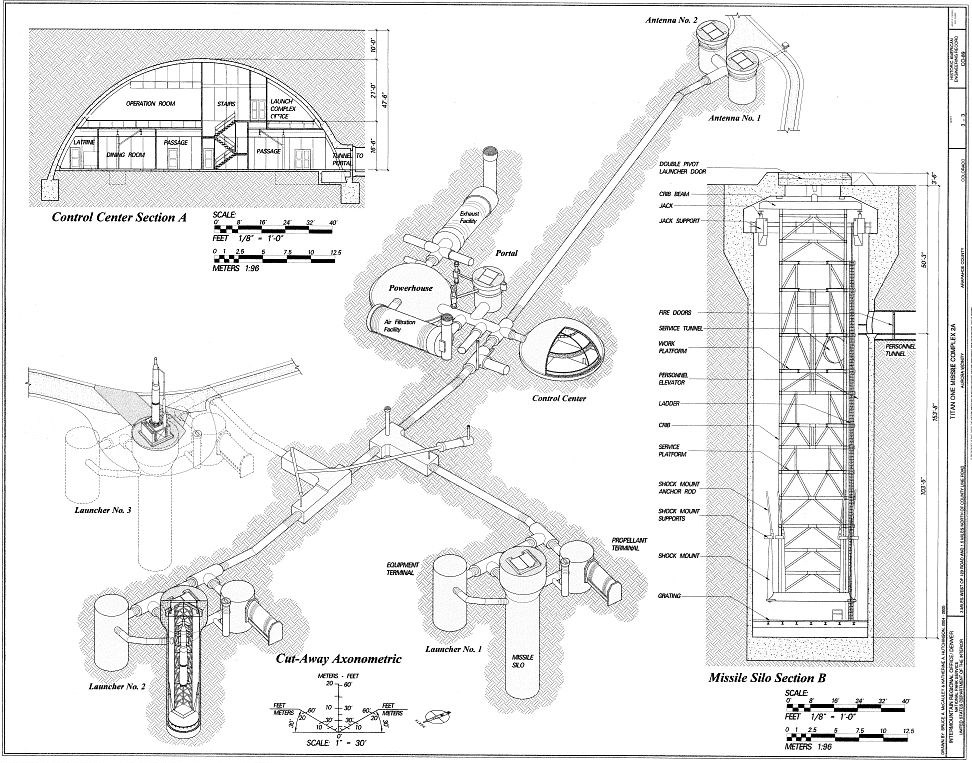Part of a series of articles titled Minuteman Missiles and the Nuclear Arms Race.
Article
The "Underground" Air Force

Library of Congress (HAER CO-89)
By the time the flight test took place, the Air Force was already planning for Minuteman missile deployment. According to historian Jacob Neufeld, the Air Force conceptually developed its "ideal" ICBM base in 1955, during the early days of the Atlas program:
The missile would be sited inside fixed, underground facilities; it was to have a quick launch reaction; it was to be stored in a launching position; the launch site would require minimal support: and the launch units were to be self-supporting for two weeks.
Turning these ideas into reality, however, proved difficult. During the height of the "missile gap" hysteria, the Air Force hastily activated the Nation's first Atlas missiles at Vandenberg Air Force Base in California. Here, the Air Force stored the missiles horizontally in "coffins" - concrete-walled, above-ground enclosures. Before the missiles could be fired, servicemen had to raise each missile vertically on a launch pad and add fuel.
The later Titan and Atlas F series missiles were stored upright in underground silos capped with massive "clamshell" doors. But Air Force engineers were worried that vibrations from the rocket engines might shake the missiles apart before launch. As a result, the Air Force equipped each silo with an elevator that raised the missile to the surface for firing. Although the missiles were stored with their tanks full of fuel, workers still needed to add volatile liquid oxygen right before launch.
The Air Force took a major step toward achieving its ideal basing system in 1960 with the development of Titan II, which used storable liquid propellants. The Air Force could store Titan II missiles with fully-loaded propellant tanks, and fire them directly from underground silos. Nonetheless, Titan II missiles still needed constant attention from an on-site crew. When Minuteman was added to the Nation's arsenal, America acquired its first truly pushbutton—literally turn-key— missile system. Historian Ernest Schwiebert noted:
With the successful utilization of solid propellants, the Minuteman could hide in its lethal lair like a shotgun shell, ready for instant firing. The operational launcher could be unmanned, underground, and hardened to withstand the surface burst of a nuclear weapon. Each launcher housed a single weapon and the equipment necessary to support and fire it, and required only periodic maintenance. The missiles could be fired . . . at a moment's notice.
Last updated: October 20, 2020
